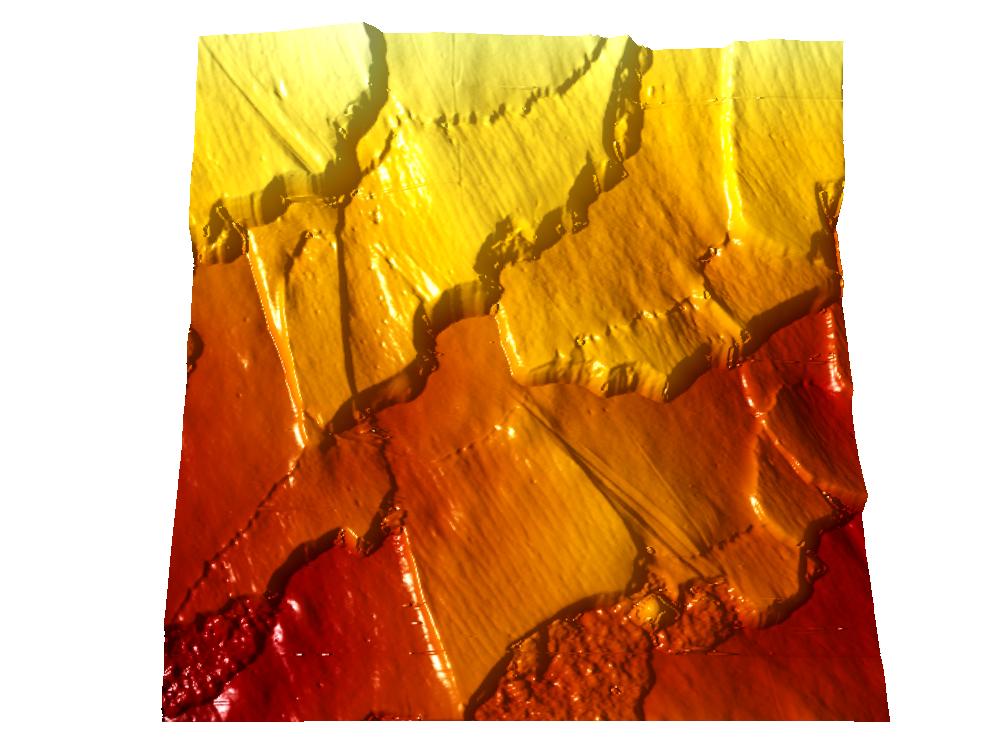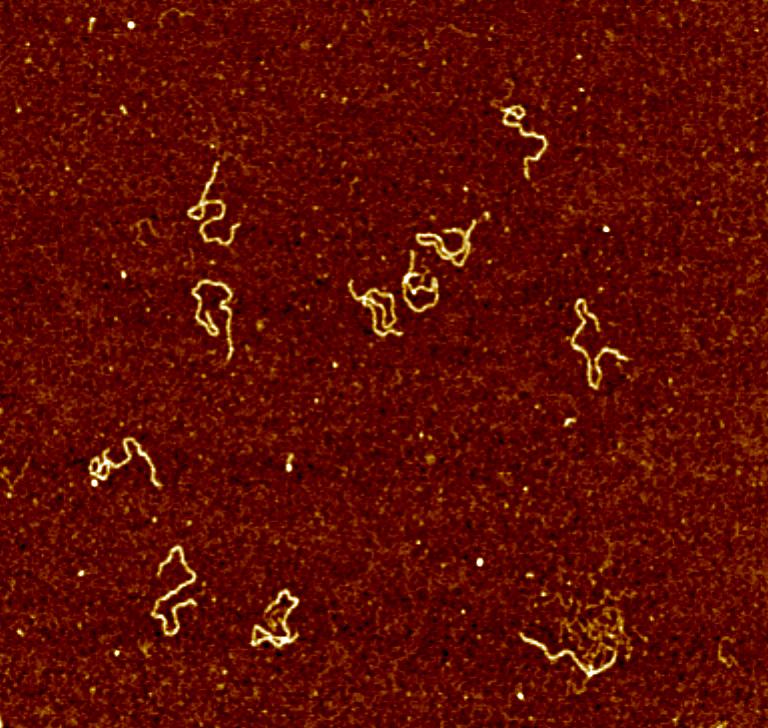Atomic Force Microscopy
The purpose of this page is to provide some background information about the atomic force microscope (AFM), the microscope used in this project, and also to show some typical AFM images of hair and DNA. Many more micrographs will be/have been sent to contributing artists for their interpretations.
AFM is a powerful microscope that provides high-resolution (highly magnified) images of a wide-range of samples. The technique works by scanning the sample under a very fine tip, in a similar way to which a record stylus tracks over a vinyl record. An image of the surface is produced line-by-line, the process typically taking about 10 minutes. The position of the tip on the sample is monitored by a laser beam focused on the highly-reflective (gold) supporting arm (the 'cantilever') to which the tip is fixed (see diagram below). As the tip goes over a high feature on the surface, the laser falls on a different part of the detector, changes the voltage signal and accordingly lowers the scanner and sample. In this way, the force between the tip and sample is kept constant so that neither become damaged. The voltage difference is used to create the image.
The Principle of AFM
AFM is often used to produce images (micrographs/pictures) representing height variations ('topography', high and low features etc). However, the AFM tip can also be used to push into surfaces giving information on hardness and elasticity of specimens, or pulled away from surfaces to provide information on adhesion (stickiness) between the sample and the tip. Below are some typical AFM topography images of hair and DNA.
|
Surface architecture of human hair showing striated (lined) exocuticles, endocuticle (roughened regions showing granular deposits where the exocuticle has broken away), scale edges and ghost edges (fine lines marking the original scale edges).
A '3d' view of human hair showing the cuticle steps more clearly.
|
AFM images of DNA isolated from bacteria. The DNA adopts a fairly coiled conformation on the flat mica surface.
A 'longitudinal' scan of hair showing many overlapping cuticle scales.
|
If you would like further information/images/explanations, please contact James.





